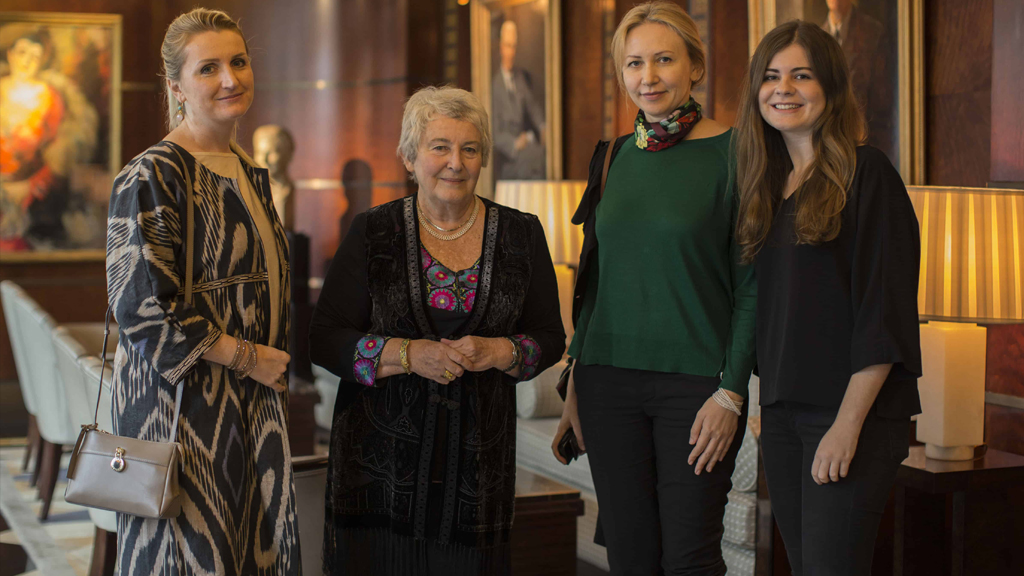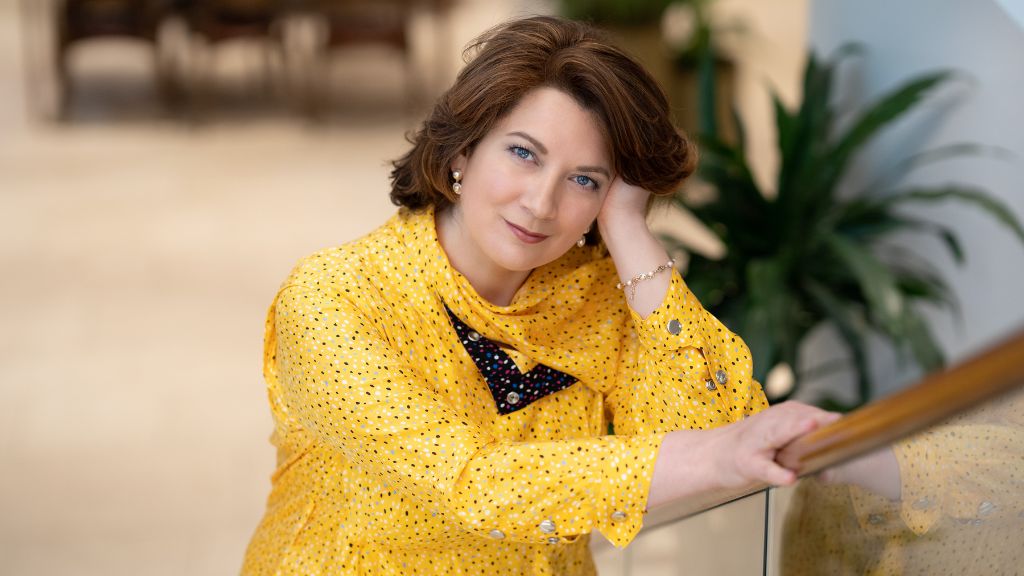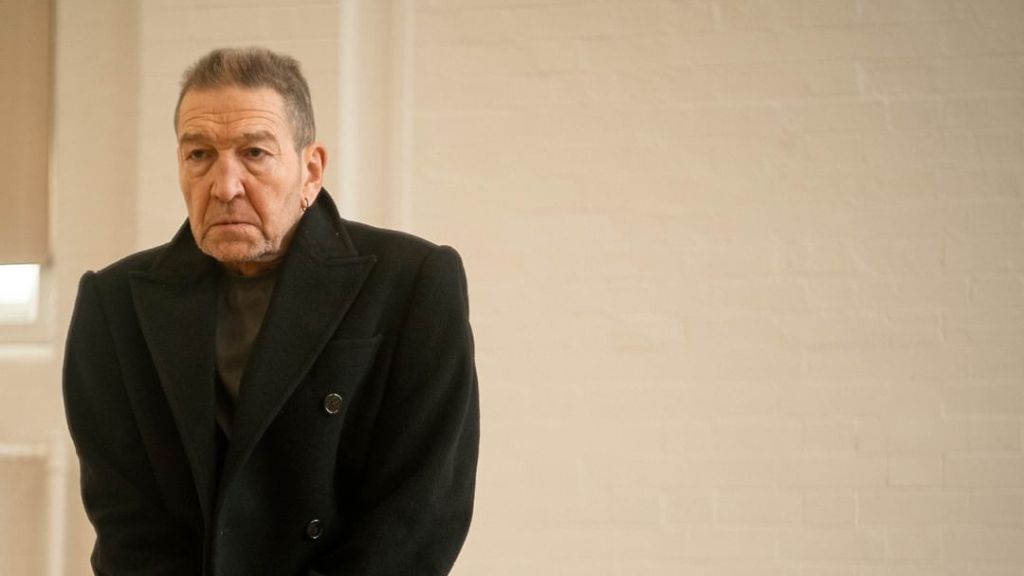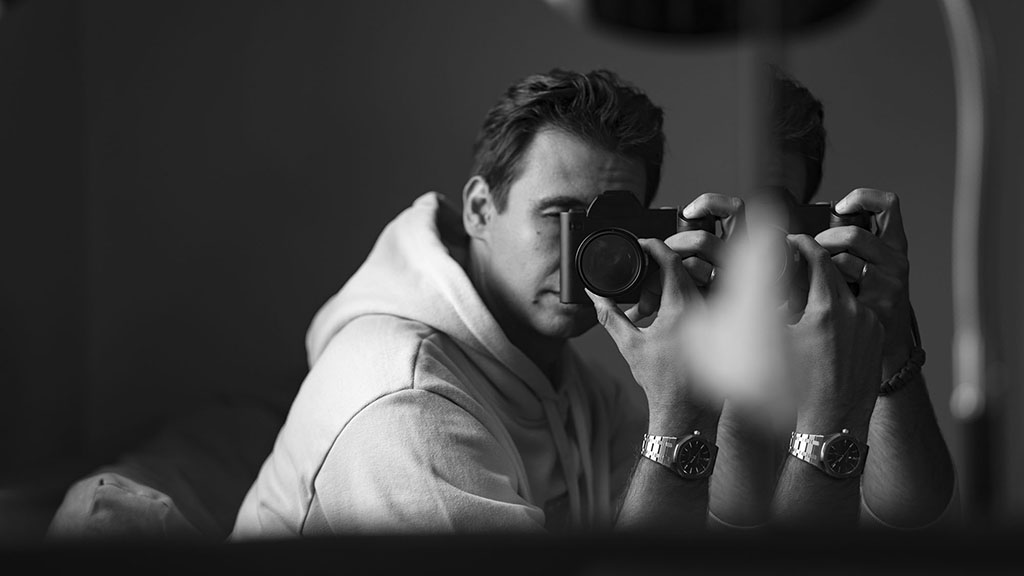
Kir Simakov, a photographer: “Truthful portraits are always fascinating”
Nowadays, anyone with a camera-equipped mobile phone can take photographs and does editing in one click. However, there is still a definition between the art of photography and stock photos in your cell, even if they are nicely retouched. Afisha.London magazine and art curator Alisa Lisovskaia talk with photographer Kir Simakov about contemporary art photography, its perspectives, and his opinion on the changes happening today in non-commercial photography.
— Let’s start with your self-description – how do you define yourself today as an artist with such an impressive experience in photography?
— First of all, I’m a photographer, can’t say that I’m a contemporary photography artist, but not yet a classic photographer either. Contemporary photography artists are trying to bring something new to the result in their photos — multi-colored lights, shooting through prisms, adding some color special effects. I found myself closer to classical photography, where the main role is played by the object in the photo, and not by special effects. I like photographs with various prisms and light effects, but at the same time, truthful portraits are always fascinating, and can convey all the joy, pain, or mood just by looking into the eyes of the character. As for myself, I try never to divide photography into black-n-white and color. I like to shoot according to the mood, and not my own, but more often to the mood of the model. Sometimes you look at a model and realize that this is such vivid personality that you want to convey its brightness through the Black-n-White photo. This is how “jingling” BW cards are obtained.
— Observing your career, what kind of reverse points do you remember the most? What has influenced your choice of artistic practice?
— I was influenced by the work of Arnold Newman, Sergey Bermeniev, Peter Lindbergh, and other classics of photography. I knew exactly who I wanted to photograph — people! Even when doing a product photoshoot, for example, jewelry, I always try to add people into the frame so that there are people in the main plan, and the jewelry serves as an addition.
People and cities are the main focus of my photography. So many thoughts come to our minds when looking at a portrait of a person. Who is he, where does he come from, what does he do, what does he dream of, what will he achieve… Every day people meet sunrises and see off sunsets, living a unique way, giving each other their emotions, talents, and knowledge. A city is a world created by people. The creation of this world radically changed man himself. The city lives the life of people, and people live the life of the city as if invisible threads connect people and cities. Right now I’m having my solo exhibition “People.Cities” (July 31st – Sept 3rd) in one of Moscow’s Main Bookstore, dedicated to these two areas of my work.
- New Ballet, Vlada Zakharova and Karim Abdullin, Moscow, 2020AGORA’s best photos contest, 2020
- Circle in the Woods, Moscow, 2021 TIFA Bronze Winner, Architecture, 2021
— In the articles I read about you, you mentioned several times that your very special skill is to see deep into the soul of your model and catch the emotional state of the personality, and its inner thoughts so that you make that exact shot you wanted very quickly. Is that true? What are your skills?
— I would not call it some kind of special skill, it is rather my personal and subjective perception of a person, the image that I drew in my head. And I try to bring the model and myself to this image. Unfortunately, it does not work for everyone or not the first time, to look deep into the soul. Some stubbornly try to hide their inner world. But to catch a momentary emotion is always possible. There were moments when, after 15-20 minutes of shooting, I said that the image was done, and the person replied to me: “So I didn’t even open up to the end, I just posed a little”. And I kept questioning: “Weren’t it you right here right now?” And then came the answer I was waiting for came up: “Of course it was me, but let me show you the real me!” Some can say that this is manipulation, but in this way, very “intimate” and truthful pictures were born. Also, You can ask to see photos in which the Model likes himself, this process always brings a pleasant smile – I just have to capture this emotion.
— You have so many portraits of celebrities. Who was the most interesting to work with?
— I don’t really like to divide people into celebrities and ordinary people, people are people. Sometimes a glimpse of a human can say much more than the whole appearance of a celebrity. It has always been more interesting to work with people who represent something, who have experience in their eyes, who have traveled a certain path, and are here now to share their wisdom and thoughts. It is difficult for me to sort out someone with whom it was more interesting to work with, apparently, I was very lucky — there were always interesting people in front of my camera who weren’t afraid to be themselves, who wanted us to see their inner world and give us a piece of their life. It’s better if I tell you whom I extremely wanted to work with — it’d be the greatest actor Anthony Hopkins. His gaze always attracted me from the screens, his calmness and smile at everything that was happening around him. That’s the person I truly wanted to capture.
— What is the process or preparation work before the photo session with such a media person?
— I almost always have the same preparation for all the shoots, probably like most photographers: explore the location, collect the equipment, and study at least a few frames of the person I am preparing to photograph. Sometimes I read some articles about this person or watch an interview with him. Before shooting, I want to form my own opinion about the person. I always take two cameras with me, in case one wants to take a day off and refuses to work. Enjoy working with the background music, preferably one that both me and the model like. But I never turn on the music of the artist I am shooting at the moment, I try to choose neutral sounds/compositions. I always try to shoot with digital medium format cameras such as Hasselblad, totally in love with the depth, the colors, and the sharpness of an image that comes out from that cameras.

Woody and his Band, New York, 2018, fragment
RedDot at ArtBasel Miami, 2019
Honorable Mention, MIFA, People-Portrait, 2020
— What is the most difficult while you are working with a model? Is it a specially structured dialogue or some particular communication with her?
— It seems to me that the most important thing is to win over the model in the very first minutes so that the person becomes comfortable with you. I often replay the entire photo shoot in my head before it even starts, the various twists and turns and dialogue options. Some of my “drafts” manage to be realized, and sometimes everything does not go according to plan at all.
— While discussing the specifics of your approach to your models, could you describe please what features and elements are the most important for you in this very final shot you select? The light? The emotion?
— For me, a combination of several things is important — the emotion of a person in a photograph, the emotions behind the scenes that everyone experienced, the light that emphasizes this emotion and mood, and… my emotions in the process of creating this frame. I really don’t like it when in the first minutes of shooting I already got the shot that I would like to take because for some reason my passion for future shots begins to disappear. Somehow I have to fight this feeling.

PETRUSHKA, from Motion series, 2017, fragment
RedDot at ArtBasel Miami 2019
Shanghai Int ArtFair, 2020
IL VIAGGIO Cantu, Italy, 2021
Venice Art 2022
— May I ask you about a non-finished charity project called IT’S ALL IN THE HAT, in collaboration with CHARITY FOUNDATION? It seems there was a lot of work for the whole team and a group of models. What was the idea of the project, and why it is important to show it to the public?
— The idea of this project belongs to my friend Alexander Von Busch, this is a wonderful charity project called “It’s All in the Hat”, which was already attended by about 150 artists, cultural and medical workers, etc. Each of them tried to recreate a grimace to make the kids laugh. Moreover, all the Characters of the project wear the same hat, which was presented to Alexander by the guitarist of a very famous American rock band from Los Angeles, whose name we will not disclose yet. We are currently looking for a suitable location to present this project.
— Talking about the landscape genre, there are many possibilities not only to exhibit such a shot at an art fair or in a gallery but to use it within a home or office space. What is your experience of working with interior photography?
— Photography for interiors has been a very tight part of my work since 2016. I like to look for some variations of landscapes or architectural details that would later find their place in the interiors of customers and friends. Recently I noticed that people are starting to like some kind of surrealistic variations of landscapes. Well, let’s move in that direction then. One of my projects “the Nine”, as well as skateboard decks with my photographs on them are represented in the galleries of Milan and Bergamo, the “Motion series” is represented on the American online platform 1stdibs. So excited about this. For a Russian photographer, finding a gallery presenting his work is a very difficult task.

theNINE series, one of 9, Miami Beach, 2019
— You have an exceptional series of landscape photographs called Karelia — what is the story behind it?
— I first came to Karelia (North-West of Russia) quite recently, to my shame, it was during the COVID-19 pandemic when the borders were closed, and I immediately fell in love with this “universe”. For several years in a row, my friends and I have been visiting Karelia, and each time I manage to bring completely different photographs from there. Colorful nature all around changes so quickly that the eye does not have time to follow everything. Sunrises and sunsets on lake Ladoga give rich colors and joy during shooting. But we have traveled only a small part of Karelia so far, how many more places we do have to visit! On our last trip, I took a round mirror 100cm in diameter with me, it’s good that our car was big enough to fit all of us and this big circle, otherwise, my friends would have dropped me off with my mirror..haha. I wanted to shoot sunrises through this mirror when the sky was already turning bright colors and the forest was still blue after the night. The result was an excellent shot, which was presented at the Yaroslavl Biennale “Enlightenment” in 2022 the year.
— Would you tell that new cities and locations with exotic and inspire you and make you do your research? How are you searching for a right angle or lightning while you are in a city you are visiting, for example? Are you attracted by the urban landscape — of what kind?
— New places have always been attracting, probably, everyone. When we arrive in a new place, I always want to see everything as quickly as possible, even if I only have enough strength for a few hours of walking, then when I am at the hotel, I start googling photos of the place where we arrived. It’s great to study the city early in the morning, before sunrise, and then compare the result with the moment when the sun had just risen and began to highlight certain elements of the urban landscape. I often just walk with an iPhone in my hand, taking pictures of all the places along my way, looking for an interesting play of light and shadow. And after some time I return there with a camera. The most colorful city for photography for me will always be New York, a city that has absorbed everything that any photographer needs. The city is constantly changing, living its own life. The gradient of light and shadow just blow your mind, and during the snowfall, New York can turn into a fairy tale.

Snowfall in Brooklyn, December 2016, fragment
Leica Camera AG holiday postcard, 2020
— Do you consider this genre being a commercial one, or just another form of art presented in a living space and everyday routine? What are your feelings towards your photographs being exhibited in very intimate, private, or public spaces?
— Cityscapes can, of course, be both commercial and a variant of art, we can no longer imagine our life without photographs of urban landscapes, we see them everywhere — in stores, at post offices, in theaters, in museums, in private collections and even in subway cars. I am very proud that some of my works are in private collections in America, Europe, and Russia. You can find some of my works in public spaces in Milan, for example at “Alchemy” on Piazza Sant’Ambrogio. For a nowadays photographer it’s essential to be present in many forms and media such as art fairs, galleries, agencies, museums, and social networks. Being an active member of the art community not only a local or national one, but a global one is a perpetual purpose of every artist.
— Where it is possible to explore your artwork today?
At the moment, my works can be seen in Moscow during my solo exhibition “People.Cities” as I’ve already mentioned. In Milan, the ALCHEMY gallery presents a part of theNINE project (photographs of sunrises and sunsets in circles) and a small selection of the DeckTheWall project – landscapes on skateboards. In the city of Bergamo (Italy), the Art Mazzoleni gallery also presents a collection of my works.
— Having participated in many gallery exhibitions and having your artworks exposed at several art fairs, what activities of that kind you do consider the most important? Could you name the most effective and intriguing collaborations you had with cultural institutions or brands recently?
— I truly believed that participation in the fairs is just about sales. This was the most important thing to me, it seemed that if you didn’t sell anything during the Fair, then no one needs your work. I was wrong, completely wrong. Fairs are communications, it is a demonstration of oneself. Works can be sold after the fair, they will be sold for sure. That’s what exactly happened to my work after one of the main Contemporary Art Fairs — RedDot (during the Art Basel Miami’2019). And clients started to contact me and learn about me on a global scale when 2 years passed since the end of the last fair I took part in. So I plan to participate in more fairs in the future. The latest collaboration I enjoyed — was working with MAXIMILIAN LONDON (Jewelry): very emotional shots full of colors and sparkle of the diamonds. In the process, we combined the ballerina from the Bolshoi Theatre and expensive products of a well-known brand into one whole thing. The result was very expressive and was on billboards in Dubai and featured in several magazines including Forbes Russia.
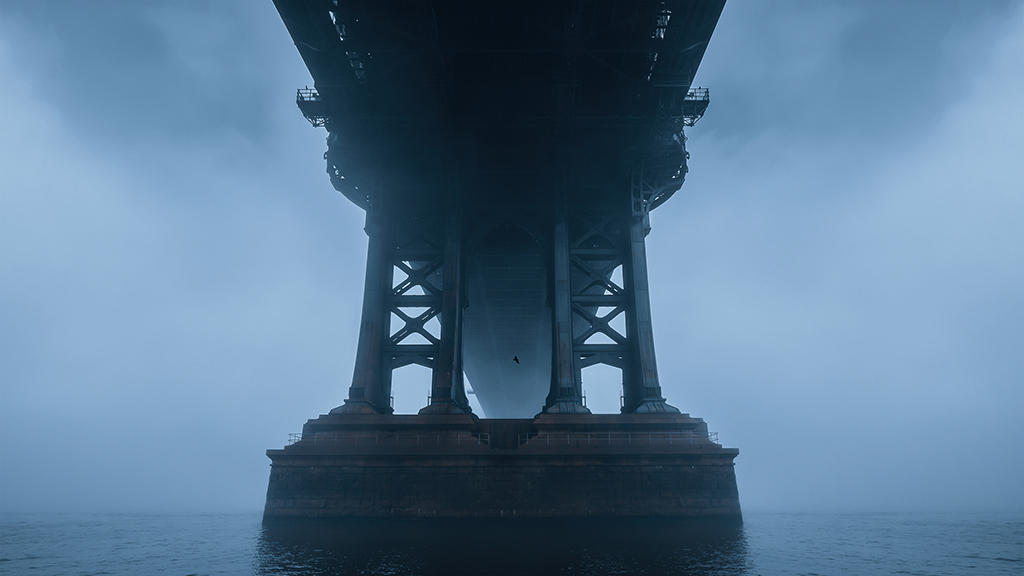
Under the Bridge, New York, 2018, fragment
MIFA Bronze Winner, Architecture-Bridges, 2020
— You have such a long list of awards — which one is the most valuable for you?
— I do not like to participate in competitions, therefore, those awards that I received are very important to me. The most unexpected, perhaps, is not an award actually, but the opportunity to present your photographs in the LEICA AKADEMIE book “INSPIRATION” in their first edition. Also, I had an impressive review of my work from Karin Rehn-Kaufmann, head of the Leica galleries international (25), head and jury member of the international and well-known Leica Oskar Barnack Award, and Art Director of Leica Camera AG: “Kirill Simakov is an outstanding photographer, who works closely together with our Leica Academy Russia. His stunning view of the world is always connected to his heart as well as to his extraordinary experience and knowledge about the structure, shadows, and all about the decisive moment.”
— All these exceptional achievements of yours have not been possible without your team and those who help you every day to conduct negotiations, continue marketing and pr campaigns and launch new projects. Could you tell us about your team? As I know, your wife Ekaterina is closely working with you since the very beginning, am I right?
— My family is my team! So it was from the beginning and so it will always be. Without the support of my family, I would not have made it this far. It is very important to feel supported in creativity. Always support, help, and sensibly criticize. Even if no one understands what I am doing, I continue to do it, because I want to see my efforts brought to life. My wife Katerina is already a part of me and my work, she takes care of all organizational issues, and schedules, works with staff, and planning exhibitions and travels. She learns quickly and easily finds contact with customers. My family stands behind most of my exhibitions, the help of each family member is invaluable!
— What are your plans for the rest of this year? And do you feel you have achieved all you dreamt about by today? Do you have some projects on your mind to realize?
— There are a lot of plans, even too many, I hope I will be able to implement at least part of the entire list before the end of the year. I would like to end the 22nd year with a good exhibition, perhaps even with the presentation of a charity photo project “It’s All in the Hat”. Also, we plan to visit Scotland, and shoot a project with a well-known Italian furniture factory in Venice and Iceland.
Kir’s projects:
https://www.1stdibs.com/search/art/?q=kir%20simakov
https://art-shop.it/categoria-prodotto/artisti/artisti-emergenti/kir-simakov/
https://foundation.app/@kirsimakov
Cover photo: Kir Simakov
Read more:
A patriot in exile, or the star and the death of Boris Berezovsky
A short guide to being a happy parent of a happily multilingual child
“Dmitry”, production based on unfinished play by Schiller, will be shown in London
SUBSCRIBE
Receive our digest once a week with quality Russian events and articles


